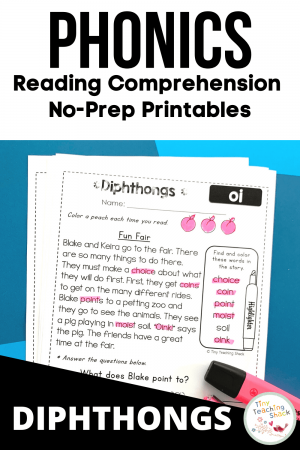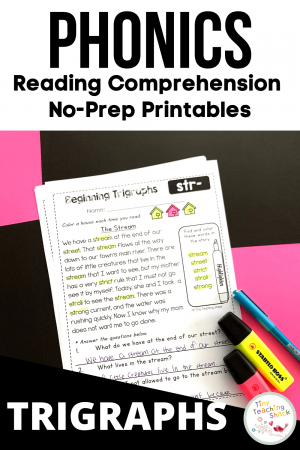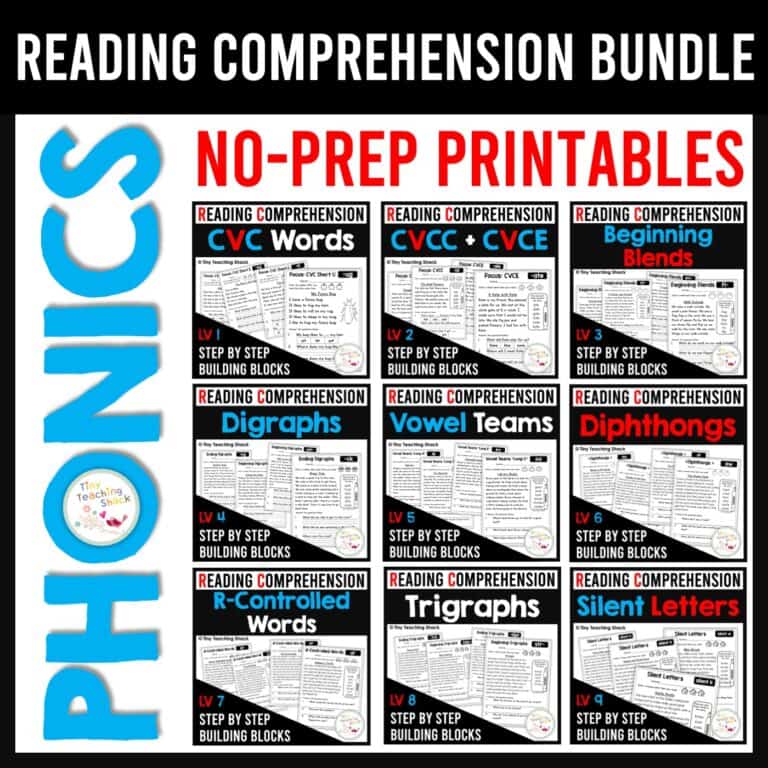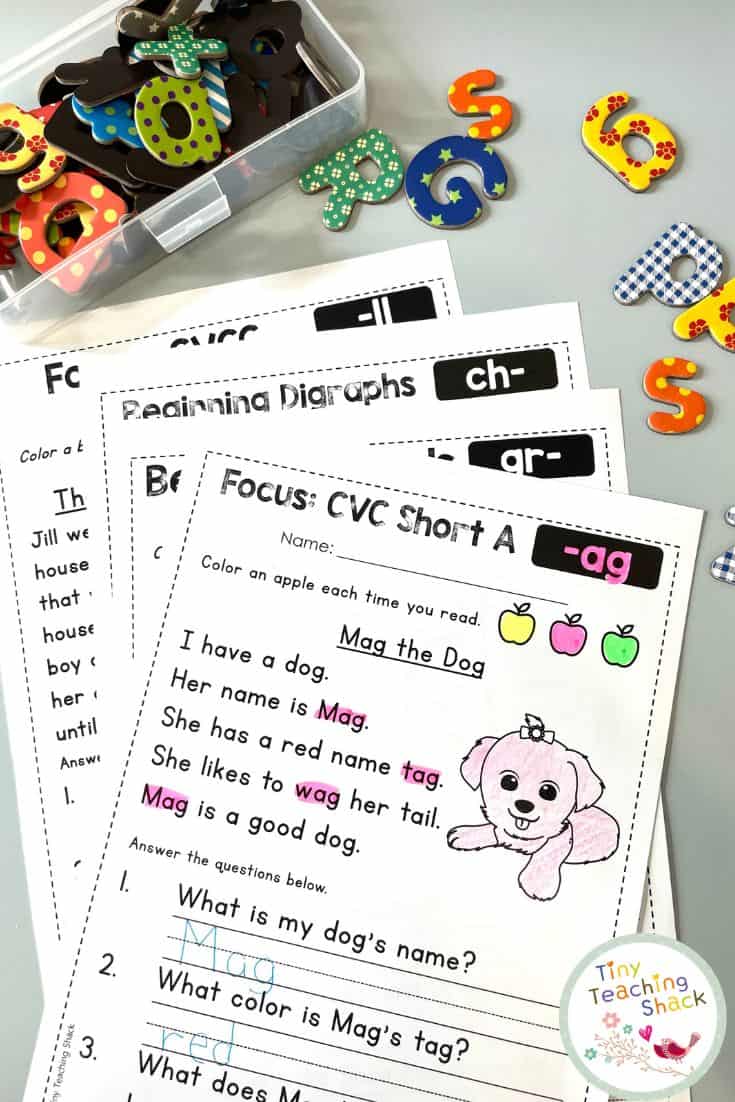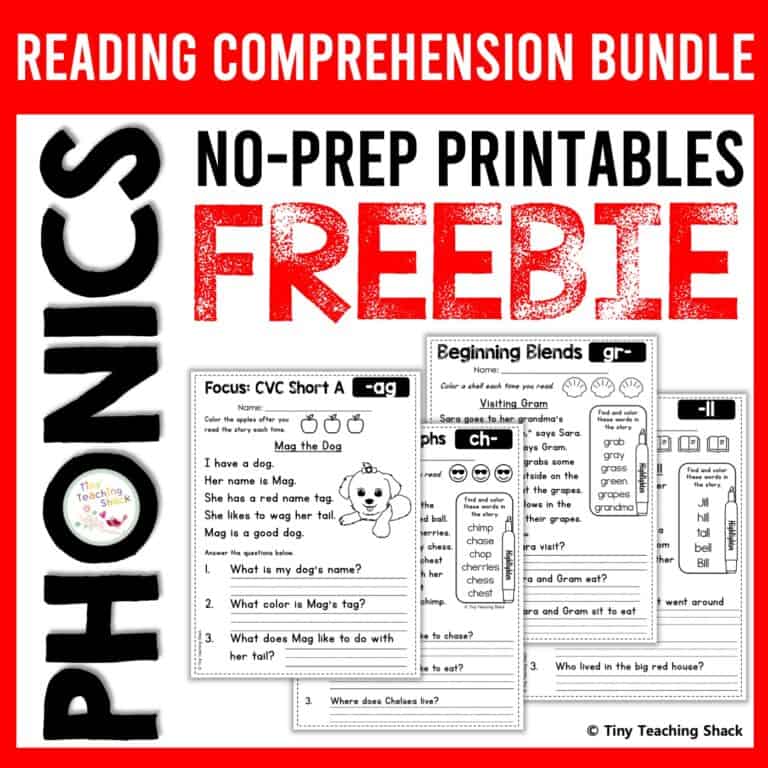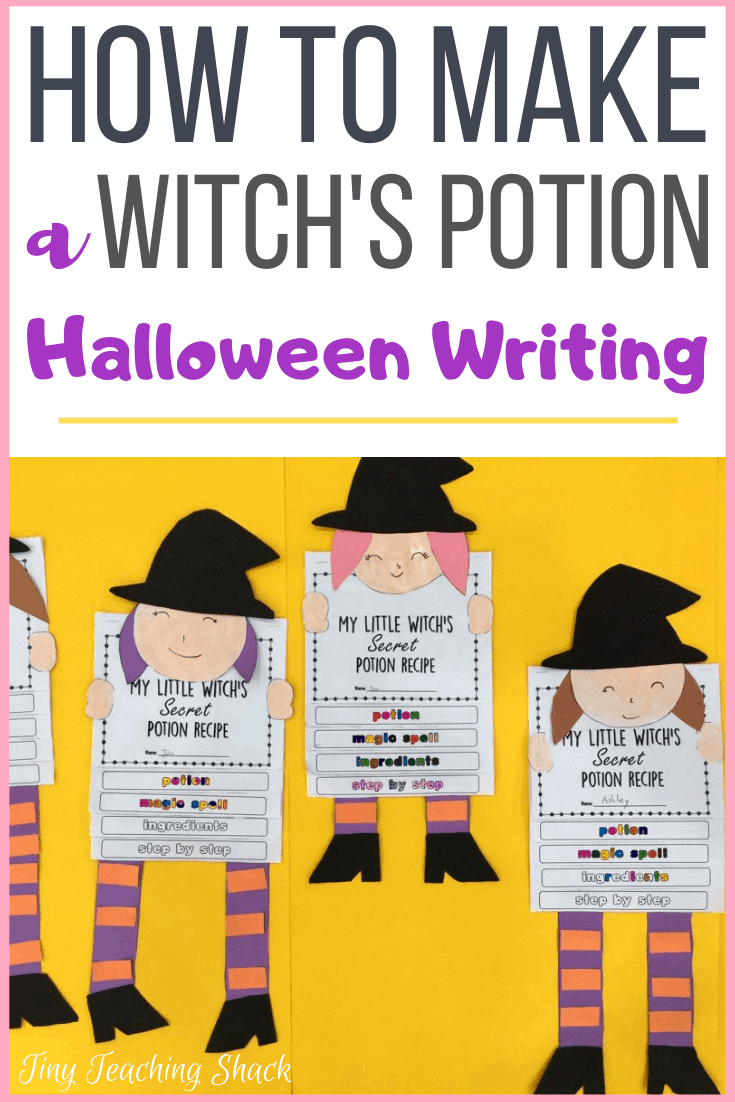Raise your hand if you are a teacher who is teaching phonics skills or is practicing reading short passages with their young students. There are so many ways to teach these types of specific skills nowadays, and it can be overwhelming and stressful teaching phonics during reading instruction!
I have found students love learning through stories and they are a great way to implement direct instruction of phonics. This is one reason I created some really fun phonics passages to help teach phonic skills to younger students. These passages are not only great for effective phonics instruction, but they also help students learn and practice letter patterns/sounds. They also get them excited to read new words which may have new patterns or may be completely new to them!
Focus Sounds
One of the most important parts of the explicit instruction of phonics is obviously learning the sounds of letters. You may find a great product or fun activity, but it is only available for beginning blends or diphthongs, leaving you scrambling to find passages that follow the same developmental pattern as the first product.
These packets are bundled in order with a scaffolding strategy in mind. The printables increase in difficulty and complexity as they progress, so the students build their knowledge gradually. To meet students’ needs, it works far better if you complete them in order
ing short passages? There are so many ways to teach these types of skills nowadays, and it can be overwhelming and stressful teaching phonics!
I have found students love learning through stories. This is one reason I created some really fun phonics passages to help teach phonic skills to students. These passages not only help students learn and practice letter sounds/patterns. They also get them excited to read words which may have new patterns or may be completely new to them!
Focus Sounds
One of the most important parts of teaching phonics is obviously learning the sounds of letters. You may find a great product, but it is only available for beginning blends or diphthongs, leaving you scrambling to find passages that follow the same developmental pattern as the first product.
These packets are bundled in order with a scaffolding strategy in mind. The printables increase in difficulty and complexity as they progress, so the students build their knowledge gradually. It works far better if you complete them in order.
All the reasons above are why I made sure to include ten of the most common letter combinations and phonics rules in my Phonics Reading Comprehension Bundle. These phonics comprehension passages are perfect for focusing on specific phonics skills while students are also becoming fluent readers.
This bundle includes the most important things you need to focus on for student learning:
- CVC
- CVCC
- CVCE
- Beginning blinds
- Digraphs
- Vowel teams
- Diphthongs
- R-controlled words
- Trigraphs
- Silent letter
Developmentally Appropriate Phonics Skills
Kids are often at all different levels of development when it comes to reading. Some children have their foot on the gas right from the beginning of the year, while others are struggling readers who need a little more time and encouragement to really develop their skills.
Teachers are so intuitive and have different ways of knowing exactly which students fall into which category. No matter what grade level you are teaching phonics to, It is important to have books, passages, and materials that are all developmentally appropriate for that age group. When teaching emergent or developing readers, it is even more important to make sure the passage or reading is not full of words that students are just not ready to tackle.
The passages I have developed with strategies for teaching phonics have this exact idea in mind. They only use developmentally appropriate sight words and vocabulary to help build students’ fluency and help them focus on the phonic sounds they are practicing or learning. A set of text-based questions follow each passage to help check for comprehension. These questions are also worded and written in kid-friendly language.
I know how annoying it can be to purchase a resource and then see the passages or activities are just not right for your classroom or students. That is why I made sure to offer a free version of my phonics reading comprehension passages. This way you can try it and fall in love with these strategies for teaching phonics, before you buy it!
Interactive Boom Cards version
Boom Cards are quickly becoming one of my favorite interactive resources. Students often do not even realize they are learning or practicing their phonics skills and are just totally engaged in the learning and fun! Plus, if your school, classroom, or even a single student needs to go into distance learning mode, they are a great tool to use!
If you are looking to try Boom Cards in your classroom, this is an awesome resource for you. All of my Phonics Reading Comprehension Passages are available in a BOOM CARDS version! How cool is that? If you ever have to return to distance learning or you are looking for a way to get your students to practice their phonics skills independently, these Boom Cards are the perfect solution!
Raise your hand if you are a teacher who is teaching phonics skills or is practicing reading short passages? There are so many ways to teach these types of skills nowadays, and it can be overwhelming and stressful to find strategies for teaching phonics and implementing explicit phonics instruction!
The good news is that I have found students love learning through stories. This is one reason I created some really fun phonics passages to help teach phonic skills to students. These passages not only help students learn and practice letter sounds/patterns. With plenty of practice, they also get them excited to read words which may have new patterns or may be completely new to them!
Focus Sounds
One of the most important part of teaching phonics is obviously learning the sounds of letters. An important thing to note is that you may find a great product, but it is only available for beginning blends or diphthongs, leaving you scrambling to find passages that follow the same developmental pattern as the first product.
These packets are bundled in order with scaffolding strategies for teaching phonics in mind. The printables increase in difficulty and complexity as they progress, so the students build their knowledge gradually. The best way to complete them is in order.
I know how annoying it can be to purchase a resource and then see the passages or activities are just not right for your classroom or students. That is why I made sure to offer a free version of my phonics reading comprehension passages. This way you can try it and fall in love with these strategies for teaching phonics, before you buy it!
Interactive Boom Cards version
Boom Cards are quickly becoming one of my favorite interactive resources. Students often do not even realize they are learning or practicing their phonics skills and are just totally engaged in the learning and fun! Plus, if your school, classroom, or even a single student needs to go into distance learning mode, they are a great tool to use!
If you are looking to try Boom Cards in your classroom, this is an awesome resource for you. All of my Phonics Reading Comprehension Passages are available in a BOOM CARDS version! How cool is that? If you ever have to return to distance learning or you are looking for a way to get your students to practice their phonics skills independently, these Boom Cards are the perfect solution!
Raise your hand if you are a teacher who is teaching phonics skills or is practicing reading short passages? There are so many ways to teach these types of skills nowadays, and it can be overwhelming and stressful to find strategies for teaching phonics and implementing explicit phonics instruction!
The good news is that I have found students love learning through stories. This is one reason I created some really fun phonics passages to help teach phonic skills to students. These passages not only help students learn and practice letter sounds/patterns. With plenty of practice, they also get them excited to read words which may have new patterns or may be completely new to them!
Focus Sounds
One of the most important part of teaching phonics is obviously learning the sounds of letters. An important thing to note is that you may find a great product, but it is only available for beginning blends or diphthongs, leaving you scrambling to find passages that follow the same developmental pattern as the first product.
These packets are bundled in order with scaffolding strategies for teaching phonics in mind. The printables increase in difficulty and complexity as they progress, so the students build their knowledge gradually. The best way to complete them is in order.
All the reasons above are why I made sure to include ten of the most common letter combinations and phonics rules in my Phonics Reading Comprehension Bundle. These phonics lessons and passages are perfect for focusing on specific phonics skills while students are also practicing and increasing their phonics knowledge and their fluency.
This bundle includes:
- CVC
- CVCC
- CVCE
- Beginning blinds
- Digraphs
- Vowel teams
- Diphthongs
- R-controlled words
- Trigraphs
- Silent letter
Developmentally Appropriate Phonics Skills
Kids are often at all different levels of development when it comes to reading and other foundational skills. Some children have their foot on the gas right from the beginning of the year, while others need a little more time and encouragement to really develop their skills on a daily basis.
Teachers are so intuitive and we often know exactly which students fall into which category. No matter what grade level you are teaching phonics to, the first step is important to have books, passages, and materials which are all developmentally appropriate for that age group. When teaching emergent or developing readers, it is even more important to make sure the passage or reading is not full of different words and unknown words that students are just not ready to tackle.
The passages I have developed with strategies for teaching phonics have this exact idea in mind. They only use developmentally appropriate sight words and vocabulary to help build students’ fluency and help them focus on the phonic sounds they are practicing or learning. A set of text-based questions follow each passage to help check for different things like comprehension. These questions are also worded and written in a kid-friendly language to help set a solid foundation.
I know how annoying it can be to purchase a resource and then see the passages or activities are just not right for your classroom of young children. That is why I made sure to offer a free version of my phonics reading comprehension passages. This way you can try it and fall in love with it, before you buy it!
Interactive Boom Cards version
Boom Cards are quickly becoming one of my favorite interactive resources. Students often do not even realize they are learning or practicing their phonics skills and are just totally engaged in the learning and fun! Plus, if your school, classroom, or even a single student needs to go into distance learning mode, they are an effective method to use!
If you are looking to try Boom Cards in your classroom, this is an awesome resource for you. All of my Phonics Reading Comprehension Passages are available in a BOOM CARDS version! How cool is that? If you ever have to return to distance learning or you are looking for strategies
Raise your hand if you are a teacher who is teaching phonics skills or is practicing reading short passages with their young students. There are so many ways to teach these types of specific skills nowadays, and it can be overwhelming and stressful teaching phonics during reading instruction!
I have found students love learning through stories and they are a great way to implement direct instruction of phonics. This is one reason I created some really fun phonics passages to help teach phonic skills to younger students. These passages are not only great for effective phonics instruction, but they also help students learn and practice letter patterns/sounds. They also get them excited to read new words which may have new patterns or may be completely new to them!
Focus Sounds
One of the most important parts of the explicit instruction of phonics is obviously learning the sounds of letters. You may find a great product or fun activity, but it is only available for beginning blends or diphthongs, leaving you scrambling to find passages that follow the same developmental pattern as the first product.
These packets are bundled in order with a scaffolding strategy in mind. The printables increase in difficulty and complexity as they progress, so the students build their knowledge gradually. To meet students’ needs, it works far better if you complete them in order.
All the reasons above are why I made sure to include ten of the most common letter combinations and phonics rules in my Phonics Reading Comprehension Bundle. These phonics comprehension passages are perfect for focusing on specific phonics skills while students are also becoming fluent readers.
This bundle includes the most important things you need to focus on for student learning:
- CVC
- CVCC
- CVCE
- Beginning blinds
- Digraphs
- Vowel teams
- Diphthongs
- R-controlled words
- Trigraphs
- Silent letter
Developmentally Appropriate Phonics Skills
Kids are often at all different levels of development when it comes to reading. Some children have their foot on the gas right from the beginning of the year, while others are struggling readers who need a little more time and encouragement to really develop their skills.
Teachers are so intuitive and have different ways of knowing exactly which students fall into which category. No matter what grade level you are teaching phonics to, It is important to have books, passages, and materials which are all developmentally appropriate for that age group. When teaching emergent or developing readers, it is even more important to make sure the passage or reading is not full of words that students are just not ready to tackle.
The passages I have developed with strategies for teaching phonics have this exact idea in mind. They only use developmentally appropriate sight words and vocabulary to help build students’ fluency and help them focus on the phonic sounds they are practicing or learning. A set of text-based questions follow each passage to help check for comprehension. These questions are also worded and written in a kid-friendly language.
I know how annoying it can be to purchase a resource and then see the passages or activities are just not right for your classroom or students. That is why I made sure to offer a free version of my phonics reading comprehension passages. This way you can try it and fall in love with these strategies for teaching phonics, before you buy it!
Interactive Boom Cards version
Boom Cards are quickly becoming one of my favorite interactive resources. Students often do not even realize they are learning or practicing their phonics skills and are just totally engaged in the learning and fun! Plus, if your school, classroom, or even a single student needs to go into distance learning mode, they are a great tool to use!
If you are looking to try Boom Cards in your classroom, this is an awesome resource for you. All of my Phonics Reading Comprehension Passages are available in a BOOM CARDS version! How cool is that? If you ever have to return to distance learning or you are looking for a way to get your students to practice their phonics skills independently, these Boom Cards are the perfect solution!








